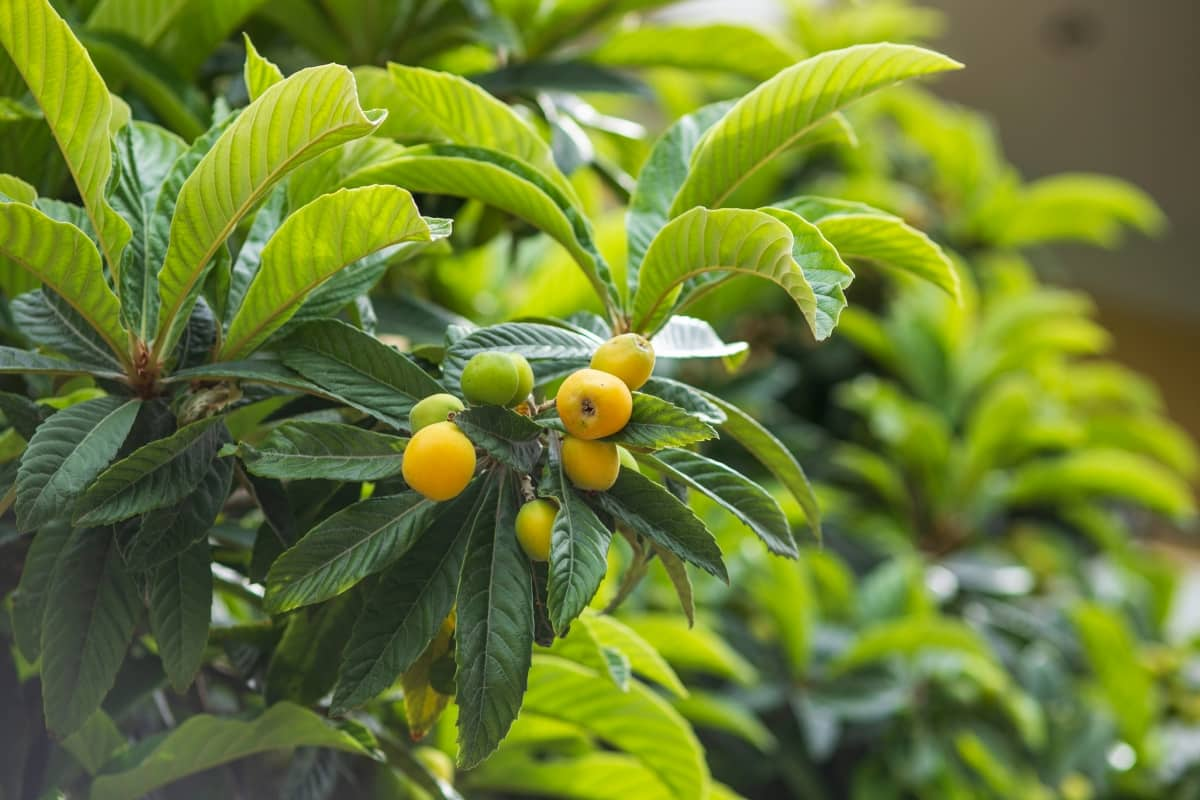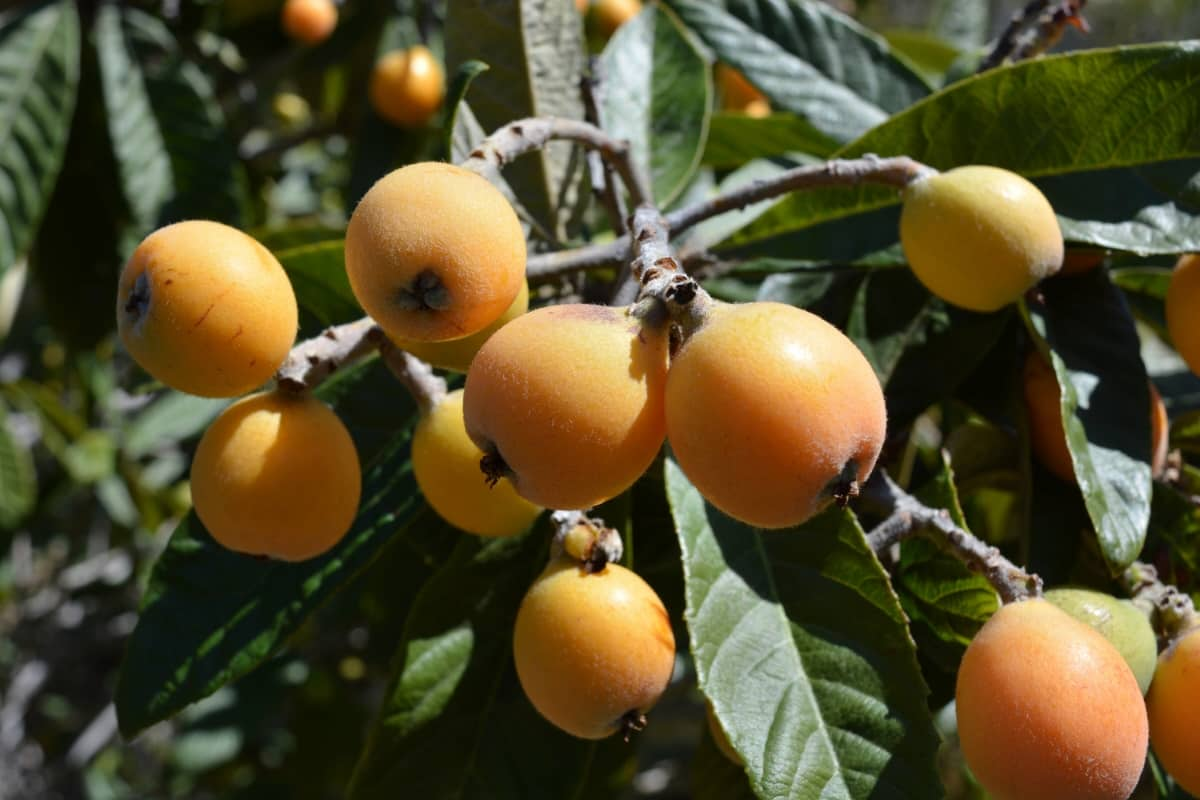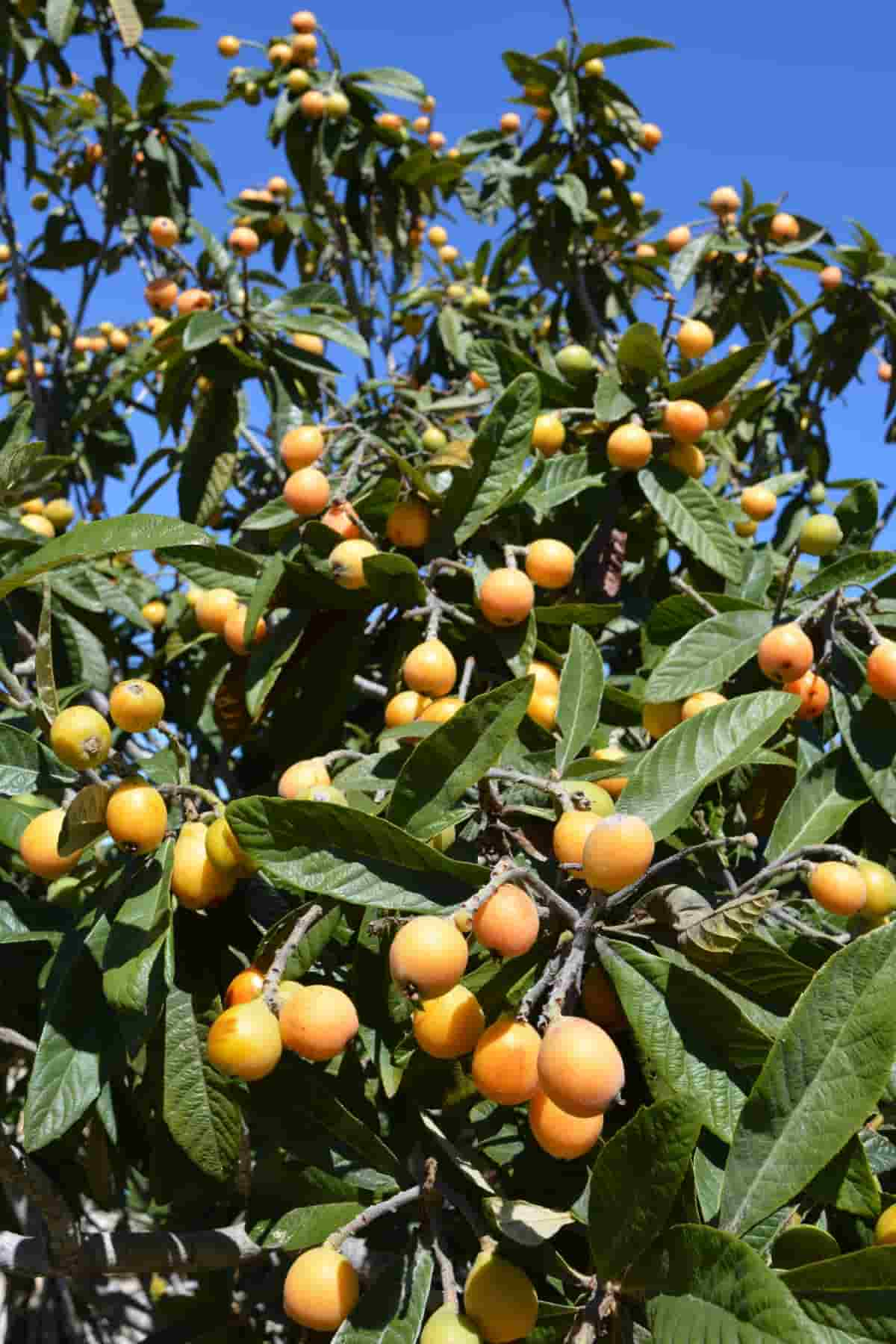Loquat trees are among the most popular fruit trees due to their vibrant green leaves and air-purifying capabilities. However, these trees are not immune to certain problems that can lead to wither and death. This document will discuss the common causes of dying Loquat trees and how to fix them.

9 Causes of Dying Loquat Trees
Why is My Loquat Tree Dying in Summer Heat, and How Can I Save It?
Loquat trees are native to tropical regions and prefer warm temperatures between 15-24°C. They can tolerate temperatures as high as 30°C, but anything above that can harm their health. When exposed to temperatures above 33°C, the Loquat tree leaves can wilt and eventually die.
- Use a shade cloth or sheer curtain to filter the sunlight and reduce the temperature around the tree.
- If you notice that your Loquat tree is struggling, you can move it to a cooler location. Choose a spot that is shaded or has a cooler temperature, such as a basement or an air-conditioned room.
- Loquat trees must be watered deeply and regularly, especially during hot weather. Check the soil moisture regularly and water it as needed.
Preventing Loquat Tree Death from Fungal Infections: Effective Remedies and Prevention Tips
- Anthracnose is a fatal fungal disease that can cause leaf spots, defoliation, and twig dieback.
- Root rot is another disease that can cause yellowing of leaves, wilting, and tree death.
- Leaf spot disease is a disease due to a fungus, and it can cause spotting on the leaves, defoliation, and twig dieback.
To prevent Loquat tree death from fungal infections, it is essential to use fungicides. Here are some of the fungicides that can help prevent Loquat tree death from fungal infections
- Copper-based fungicides are effective against fungal infections like root rot and leaf spot.
- Sulfur-based fungicides are also effective against various fungal infections affecting Loquat trees.
- Neem oil is another effective fungicide that can prevent fungal infections in Loquat trees.
Identifying Nutrient Deficiencies in Loquat Trees and Remedies to Revive Them
Signs will include lots of shedding leaves along with discoloration on the leaves. This will vary depending on the different types of deficiency. To simplify the symptoms of these, take a look at them below.
Deficiency and their symptoms
- Nitrogen- Entire leaves turn yellow
- Phosphorus- Purple or brown spots
- Potassium- Leaf edges turn brown
- Calcium- Newer leaves grow paler than older leaves
- Manganese- Yellow regions between the veins of leaves
- Zinc- Bronze-colored splotches in younger leaves
To fight the deficiency, you will need compost or fertilizer. Compost is a very good and versatile option because it’s made from organic waste. So naturally, it has a diverse spectrum of nutrients. It’s suitable if your Loquat tree has multiple deficiencies and can address them all. Fertilize your Loquat tree with a balanced blend of the elements needed, the ratio of 8-8-8 or 12-12-12, and always as recommended.
How to Protect Loquat Trees from Pests and Diseases to Prevent Decline and Death
- Mealybugs: Mealybugs are tiny insects that feed on the sap of the Loquat tree, causing yellowing leaves and stunted growth. The best fungicides to combat mealybugs are insecticidal soap, neem oil, and horticultural oil.
- Spider mites: These pests are common in warm and dry conditions. They cause webbing on the leaves of the Loquat tree and can lead to leaf drop. Fungicides such as insecticidal soap, neem oil, and horticultural oil can be used to eliminate spider mites.
- Scale insects: These pests form small, circular bumps on the bark of the Loquat tree. They cause yellow leaves and stunted growth. Fungicides such as insecticidal soap, neem, and horticultural oil effectively control scale insects.
- Root rot: This disease is caused by overwatering and poorly drained soil. It can cause the Loquat tree to wilt and eventually die. Fungicides such as copper fungicide and chlorothalonil can treat root rot.
- Leaf spot:This disease appears as brown spots on the Loquat tree leaves. It can be caused by overwatering or poor air circulation. Fungicides such as copper fungicide and chlorothalonil can be used to treat leaf spots.
In case you missed it: 9 Causes of Dying Kumquat Trees and How to Fix Them?

Overwatering Issues in Loquat Trees: Signs, Symptoms, and Steps to Rescue a Dying Tree
If you apply too much water, the roots and the lower portion of the stem may rot. This can cause your tree to shed its leaves and die. Rotten roots can cause your Loquat tree to die fast. You will know the roots are rotten when the leaves and branches look dry despite regular watering. These and the healthy microbes in the soil can trigger decomposition. When this happens, your roots will decay, killing the tree.
- Repotting the tree is the best line of action here. If you’re repotting yourself, use gloves for this one. The Loquat tree has a very toxic sap that can burn your skin.
- Lift the tree out of the old pot. Then gently scrape off the excess soil using a soft combing motion. Ensure none of the little root hairs or larger roots are damaged.
Underwatering Issues in Loquat Trees: Signs, Symptoms, and Steps to Rescue a Dying Tree
The main symptoms of an underwatered Loquat tree are leaves that start to curl inwards, and the tips of the its leaves become brown or yellow. In some situations, Loquat trees may also droop from the trunk. Underwatered and overwatered trees can cause leaf drops and yellowing leaves in both underwatered and overwatered leaves.
The best way to save Loquat trees that have been underwatered is to follow a regular watering schedule. You can water Loquat trees a few times per week to ensure your tree gets enough watering. Ensure you check the topsoil daily for its watering needs. If the topsoil looks dry, then water the tree.
Loquat Tree Winter Damage/Dying: Protecting Trees from Frost and Cold Temperatures
Most Loquat trees can survive temperatures as low as 2°C for short periods. However, extended exposure to temperatures below 0°C can be fatal. If you live in an area where temperatures regularly drop below freezing, protecting your Loquat tree from frost is important.
- Place the tree in a well-lit area away from drafty windows and doors. If you cannot move your Loquat tree indoors, cover it with a blanket or frost cloth to provide some insulation from the cold.
- Watering your tree before a frost can help insulate the Loquat tree roots and protect them from freezing. Be sure to water your Loquat tree early in the day so that the water can be absorbed before temperatures drop at night.
Improper Pruning May Cause Loquat Tree Death: Pruning Methods for Healthy Growth
Improper pruning can be harmful to the health of a Loquat tree. Several causes of improper pruning can lead to the decline of a Loquat tree. One of the main causes of improper pruning is excessive pruning. When too much of the tree is removed at once, it can cause stress and shock to the tree.
To prune your Loquat tree in the correct way, first, use sharp pruning tools to remove damaged or diseased branches with clean cuts. Next, provide proper care to the tree, including regular watering, fertilization, and pest control. It may also be helpful to consult a professional arborist or tree care specialist for guidance on properly caring for the tree and preventing future improper pruning.
Reviving a Stressed Loquat Tree: Rehabilitation Methods for Overall Recovery
- Repotting is one of the most important steps in rehabilitating a stressed Loquat tree. This will ensure the tree has enough space to grow and develop properly. Make sure to use high-quality potting soil rich in nutrients and drains well.
- It would be best to prune any dead or damaged branches to stimulate new growth.
- Loquat trees require moderate watering and should never be allowed to dry out completely. They also need bright, indirect sunlight to thrive.
- You can also use fertilizers and tree supplements to give your Loquat tree the nutrients it needs to recover.
In case you missed it: 9 Causes of Dying Pear Trees and How to Fix Them?

Conclusion
Loquat trees can be saved from dying with the right identification and solutions. The good thing is that this guide equips you with all you need to know about saving a dying Loquat tree.
- Feed Your Flock for Less: Top 10 Tips to Save on Chicken Feed
- Ultimate Guide to Ossabaw Island Hog: Breeding, Raising, Diet, and Care
- Hatching Answers: The Top 10 Reasons Your Chickens Aren’t Laying Eggs
- Eggs and Economics: Breaking Down the Cost of Raising Backyard Chickens
- Defend Your Greens: Proven Methods to Keep Iguanas Out of Your Garden
- Ultimate Guide to Cinnamon Queen Chicken: A Comprehensive Guide for Beginners
- Ultimate Guide to California Tan Chicken: Breeding, Raising, Diet, Egg-Production and Care
- Ultimate Guide to Marsh Daisy Chicken: Breeding, Raising, Diet, and Care
- 10 Types of Chicken Farming Businesses You Can Start for Profits